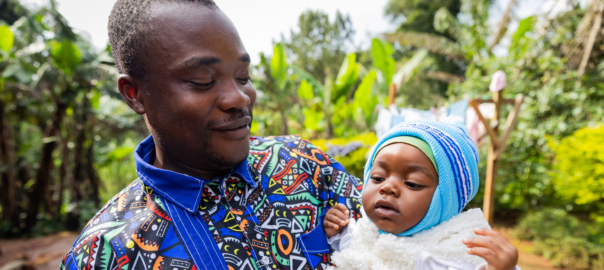Announcing the latest IPUMS DHS Research Awards!

IPUMS DHS recently selected the 2023 winners of its Best Published Paper and Best Student Paper awards. Using source data from the public use files of The DHS Program, IPUMS DHS has created variables with consistent names and codes across samples, displays variable availability and information about each variable on its website, and allows registered data users to download, at no cost, a customized data file with the samples and fully harmonized variables relevant to their research project. One ideal use of IPUMS DHS is studying many countries simultaneously to come to robust conclusions—as was the case for the 2023 IPUMS DHS Best Paper Award winners.
Sustainable Development Target 3.2 calls for ending preventable deaths of children under age 5. In low-income countries, limited resources restrict the scope of public health outreach. To maximize the impact of available funds, governments have prioritized the poorest households in their campaigns against infant mortality. Is that approach effective?
The winners of the 2023 IPUMS DHS Best Published Paper Award say, “No.” In “Better Individual-Level Risk Models Can Improve Targeting and Life-Saving Potential of Early-Mortality Interventions,” published in Scientific Reports, Chad Hazlett, Antonio P. Ramos, and Stephen Smith show that targeting the poorest 10% of households (according to the wealth index) performs little better than random targeting in reducing infant mortality in 22 Sub-Saharan African countries. In other words, since infant mortality is not primarily concentrated in the poorest households, other criteria are needed to guide cost-effective public health programs.
Fortunately, using IPUMS DHS data and machine learning techniques, Hazlett, Ramos, and Smith found pre-birth variables that can identify the most at-risk infants. Using information on such facts as the prior death of a sibling, maternal education, local malaria prevalence, rural location, and access to clean water for a household enables more effective targeting, so reaching the 10% of infants at the highest risk eliminates 15-30% of infant deaths, depending on the country.
The best paper with a leading author who is a student also looked at the well-being of children, but from the perspective of climate change’s effects on migration. Previous research on climate change and migration has considered adult migrant workers and relocation of entire families. By contrast, Sara Ronnkvist, Brian Thiede, and Emma Barber studied “Child Fostering in a Changing Climate: Evidence from Sub-Saharan Africa,” published in Population and Environment.
This study used IPUMS DHS’s contextual variables on temperature and precipitation and harmonized DHS Program variables on household composition and births for 23 sub-Saharan African countries. Taking an admirably nuanced approach, the authors find that the cultural prevalence of child fostering, the number of resident biological children, and the socioeconomic status of households affect whether and how child fostering rates change in response to climate shocks.
Congratulations to these researchers on their impressive accomplishment!
Special thanks to our guest blog contributors from IPUMS DHS:
Dr. Miriam King, Senior Research Scientist, Institute for Social Research and Data Innovation, University of Minnesota, Twin Cities
IPUMS DHS is a system that makes it easy to find and review thousands of DHS survey variables and to download a single fully harmonized data file with only the variables and samples that interest you. IPUMS DHS currently includes variables from 180 DHS survey samples from 45 countries, with more samples to be released soon.


